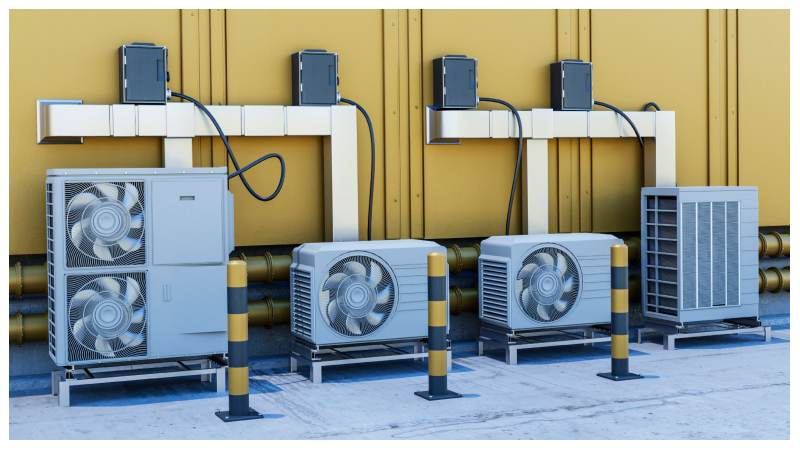Winter can bring harsh temperatures that put your heating, ventilation, and air conditioning (HVAC) system to the test. Ensuring that your system is ready for cold weather not only provides comfort throughout the season but also protects your home from costly repairs. We will explore practical steps that homeowners can take to maintain their HVAC system, improve energy efficiency, and avoid unexpected breakdowns during the winter months. Proper preparation involves checking your equipment, cleaning key components, and scheduling regular maintenance to ensure your system operates smoothly when you need it most. Taking preventive measures now can save money, extend the life of your HVAC system, and provide peace of mind.
Practical Steps to Winterize Your HVAC System
Schedule a Professional Inspection
Having a qualified technician inspect your HVAC system before winter arrives is one of the most important steps for maintaining comfort and efficiency, especially when seeking reliable HVAC in Riverside services. During this inspection, the technician will examine your heating system, ductwork, and filters to identify any potential issues that could affect performance. They will check for leaks, corrosion, or worn-out components that could lead to inefficiency or breakdowns during the coldest months. Ensuring that your system is in good condition also helps maintain indoor air quality by reducing the circulation of dust or mold. While some homeowners may attempt minor inspections themselves, professional evaluation ensures that hidden problems are addressed before they escalate, providing both safety and reliable performance throughout the season.
Replace or Clean Air Filters
Air filters play a critical role in the efficiency and longevity of your HVAC system. Dirty or clogged filters force your system to work harder, increasing energy consumption and putting unnecessary strain on components. Before winter, replacing disposable filters or thoroughly cleaning reusable ones can dramatically improve airflow and system performance. Depending on the size and type of your HVAC system, filters should typically be checked every 30 to 90 days. In addition to improving heating efficiency, clean filters reduce allergens and improve indoor air quality, creating a healthier environment for your family during the winter months when windows are often closed and ventilation is limited.
Inspect and Seal Ductwork
Ducts are responsible for distributing heated air throughout your home, and leaks or gaps can lead to significant heat loss and energy waste. Before winter, inspecting your ductwork for loose connections, cracks, or holes is essential. Small leaks can be sealed using foil tape or mastic sealant, which improves heating efficiency and helps maintain consistent temperatures in all rooms. Properly sealed ducts reduce energy costs, prevent drafts, and lessen the burden on your HVAC system. Additionally, ensuring that ducts are insulated, especially in unheated areas such as basements or attics, prevents warm air from escaping and protects the system from overworking during cold spells.
Check Thermostat Settings and Functionality
Your thermostat is the central control for your heating system, and ensuring it functions correctly is key to winter comfort. Programmable thermostats enable customized temperature schedules, which can help reduce energy consumption when you are asleep or away. Before winter, test your thermostat to ensure it accurately responds to temperature adjustments. Consider upgrading to a smart thermostat if your current model is outdated. Smart thermostats offer remote control, learning capabilities, and energy reports that can further optimize heating efficiency. Properly functioning thermostats prevent uneven temperatures and unnecessary strain on your system, making your home more comfortable while keeping energy costs in check.
Clean and Inspect Outdoor Components
If your HVAC system includes an outdoor unit, such as a heat pump or air conditioner used for heating, it is crucial to inspect and clean it before the onset of winter. Remove any debris, leaves, or dirt that may have accumulated around the unit, and ensure that the area is clear for proper airflow. Inspect the unit for signs of damage or corrosion that could affect performance. Proper clearance and maintenance of outdoor equipment not only help your system operate efficiently but also prevent potential damage from ice or snow buildup during the winter months. Regular cleaning ensures your system is ready to deliver reliable heat when temperatures drop.
Examine and Test Safety Features
HVAC systems incorporate several safety features, including carbon monoxide detectors and emergency shut-off mechanisms. Ensuring these systems are operational is especially important during winter when furnaces and heating systems are running continuously. Test carbon monoxide detectors and replace batteries as needed. Check emergency shut-off switches and ensure that vents and exhausts are unobstructed. Properly functioning safety features protect your home and family from hazards such as gas leaks or fire risks, while maintaining optimal performance. Safety checks also offer peace of mind, knowing that your heating system can operate safely throughout the season without unexpected dangers.
Schedule Routine Maintenance
Routine maintenance goes beyond inspections and cleaning; it includes tasks such as lubricating moving parts, checking refrigerant levels, and testing system efficiency. Scheduling maintenance before winter ensures that your HVAC system operates at peak efficiency and can prevent costly repairs later. Regular maintenance also extends the lifespan of your equipment by reducing wear and tear on critical components. Many HVAC providers offer preventive maintenance plans that include seasonal check-ups and priority service. By committing to regular maintenance, homeowners can avoid inconvenient breakdowns and maintain a consistent, comfortable indoor temperature during the coldest months of the year.
Preparing your HVAC system for winter involves a combination of inspection, cleaning, and routine maintenance to ensure reliable performance and energy efficiency. By addressing potential issues before temperatures drop, homeowners can reduce the risk of breakdowns, enhance indoor air quality, and maintain a comfortable living environment throughout the season. Simple steps, such as replacing air filters, sealing ducts, checking thermostats, cleaning outdoor units, testing safety features, and scheduling professional maintenance, can have a significant impact on the overall efficiency and lifespan of your system. Taking these preventive measures now offers peace of mind and keeps your home warm and safe during the winter months.

